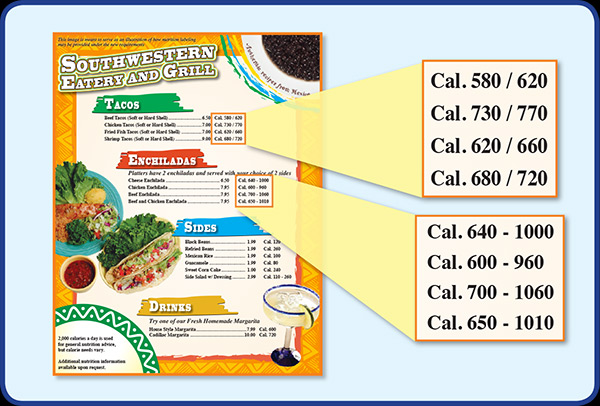
Food prepared away from home is typically higher in calories and lower in nutrition than food prepared at home, but it now makes up more than one-third of all calories purchased in the United States. Consumers tend to view full-service restaurants as providing healthier, higher quality food than fast-food restaurants, but some studies have found much higher calorie, fat, and sodium levels in food at full-service restaurants.
Researchers from Drexel University and the University of Pennsylvania studied more than 2,600 menu items served at full-service restaurant chains operating in Philadelphia and concluded that foods served at full-service restaurant chains are high in calories, saturated fat, and sodium, and that standard definitions are needed for ”healthy choice” tags and for entrees targeted to vulnerable age groups.
Nutrition information provided at full-service restaurants has lagged behind fast-food restaurants; however, a 2010 menu labeling ordinance in Philadelphia provided an opportunity for an in-depth study of the calorie and nutrition content of menu items served at full-service restaurants. The study included 21 full-service restaurant chains which offered single-serving entrees and provided calories and sodium information for all menu items on either their websites or printed menus.
The study focused on entrees, appetizers, and side dishes, but also provided information on other less consistently labeled menu categories. “The need to educate customers about the nutritional content of restaurant foods is acute because consumers increasingly eat away from home, restaurants serve large portions of energy-dense and high-sodium foods, and obesity and the prevalence of other diet-related diseases are high,” according to lead researcher Amy Auchincloss, PhD, MPH, of the Drexel University School of Public Health.
Although no guidelines exist for appropriate nutrient levels of full-service restaurant menu items, about half of the entrees did not meet the study’s “healthier” calorie criteria, based on general nutrition advice in the US Dietary Guidelines. Almost one-third of the entrees exceeded the total daily recommended value (DRV) for sodium, and only one-fifth met recommended fiber minimums. Items targeting seniors and children had fewer calories, but often exceeded the DRV for fat and sodium. More than half of the studied restaurants designate some healthy choices on their menus, but the meaning of that designation varies; in most cases, only calorie content is considered and they may still have high sodium levels.
Nutrition education may help the consumer evaluate these menu items on their own. Based on related work, this same research team has previously reported that consumers at full-service restaurants who used nutritional information on the menu ordered significantly fewer calories. However, policy changes for restaurants that parallel those of fast food may be more effective. Having a definition for a healthy choice entrée could help consumers who want to choose food for taste and health promotion.
The study done by Drexel University and the University of Pennsylvania.